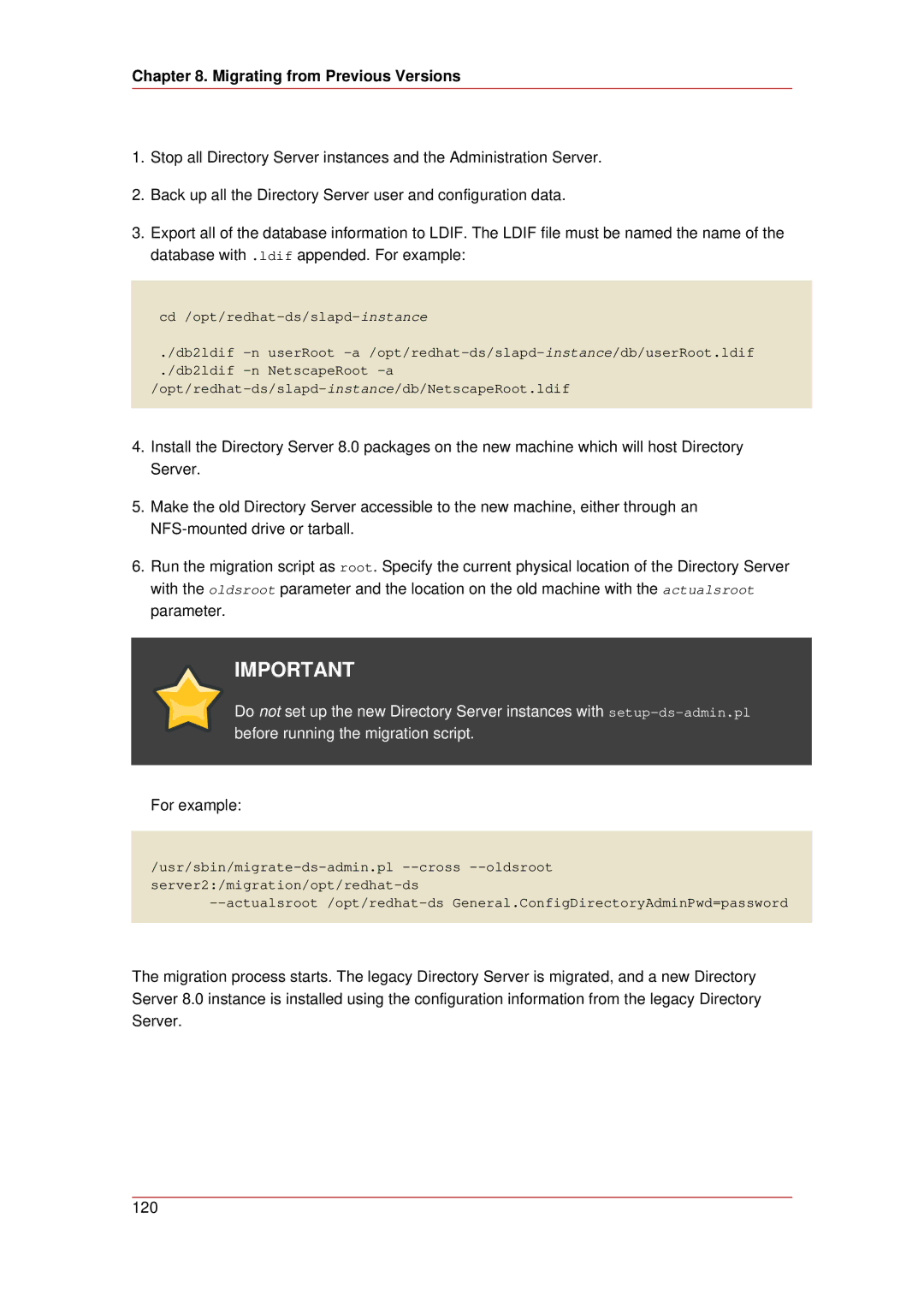
Chapter 8. Migrating from Previous Versions
1.Stop all Directory Server instances and the Administration Server.
2.Back up all the Directory Server user and configuration data.
3.Export all of the database information to LDIF. The LDIF file must be named the name of the database with .ldif appended. For example:
./db2ldif
./db2ldif
4.Install the Directory Server 8.0 packages on the new machine which will host Directory Server.
5.Make the old Directory Server accessible to the new machine, either through an
6.Run the migration script as root. Specify the current physical location of the Directory Server with the oldsroot parameter and the location on the old machine with the actualsroot parameter.
IMPORTANT
Do not set up the new Directory Server instances with
For example:
The migration process starts. The legacy Directory Server is migrated, and a new Directory Server 8.0 instance is installed using the configuration information from the legacy Directory Server.
120
